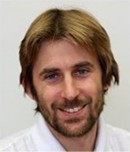

Plenary Lecture
Application of Combined Model of Continuum and Discrete Fractures for Groundwater Problems with Field Data

Associate Professor Milan Hokr
Institute for Nanomaterials, Advanced Technologies and Innovation
Technical University of Liberec
Liberec, Czech Republic
E-mail: Milan.hokr@tul.cz
Abstract: Modelling of the groundwater flow and solute transport in fractured rock is one of the challenges for numerical solution in the last decades. It is important for many engineering application of the underground – water resources, geothermal energy, mining, underground construction, or waste storage. One of the greatest problems of such a rock modeling is to represent inhomogeneities that can differ in scale from small micro-cracks to faults of kilometers’ length. The complexity of the problem increases when there are excavations in the rock, with its size different from a fracture scale or a problem scale. The multidimensional (hybrid) model is based on combination of standard approaches for fractured rock – the equivalent continuum and the discrete fracture network. Numerical solution of such the problem represented with coupled 3D, 2D, and 1D subdomains is implemented in quite few of the established groundwater simulation codes. The solution with mixed-hybrid finite element method and its implementation in the open-source simulation code Flow123D will be presented. The second part of the talk is focused on practical examples of work with field data. Preprocessing of model geometry and discretisation is presented as several options for use of standard GIS and CAD programs and own problem-suited programs. Then problems of the deep tunnel inflow are solved – the model is calibrated to fit the measured water inflow rate separately from the conductive fractures (2D planes) and less conductive rock (3D volume), with use of an inverse problem solver. The results are confirmed by the tracer transport model (advection), calibrated against independently obtained data from natural tracers – estimation of travel time between the terrain surface and the tunnel.
Brief Biography of the Speaker:M.H. obtained the M.Sc. (Ing.) degree at the Czech Technical University (Prague, Czech Reo.), Faculty of Nuclear Science and Physical Engineering, in “Mathematical Engineering” branch and the Ph.D. degree at the Technical University of Liberec (Czech Rep.), Faculty of Mechatronics and Interdisciplinary Engineering Studies, in the “Science Engineering” branch (2003). He obtained Assoc.prof. degree in the same place in 2007. His research interests are related with application of numerical methods for solution of the physical problems in subsurface – finite element and finite volume methods, coupled problems (density-dependent flow, thermo-hydro-mechanical), fractured rock conceptual models, inverse problems – currently with problems coming from the safety analysis of a deep geological repository of the spent nuclear fuel. The research includes also the field methods for data measurements. He is an author of more than 50 papers, including ISI-indexed journals (*). He works in international teams in projects focused on inter-comparison of different conceptual models and simulation codes, and on interpreting the field experiments with the models. He manages the teams of young researchers and Ph.D. students working in these problems.